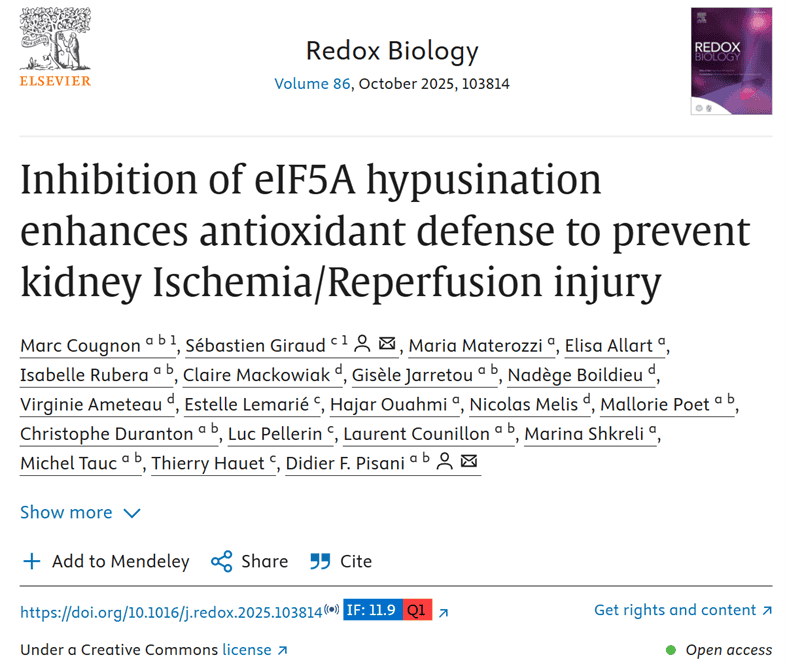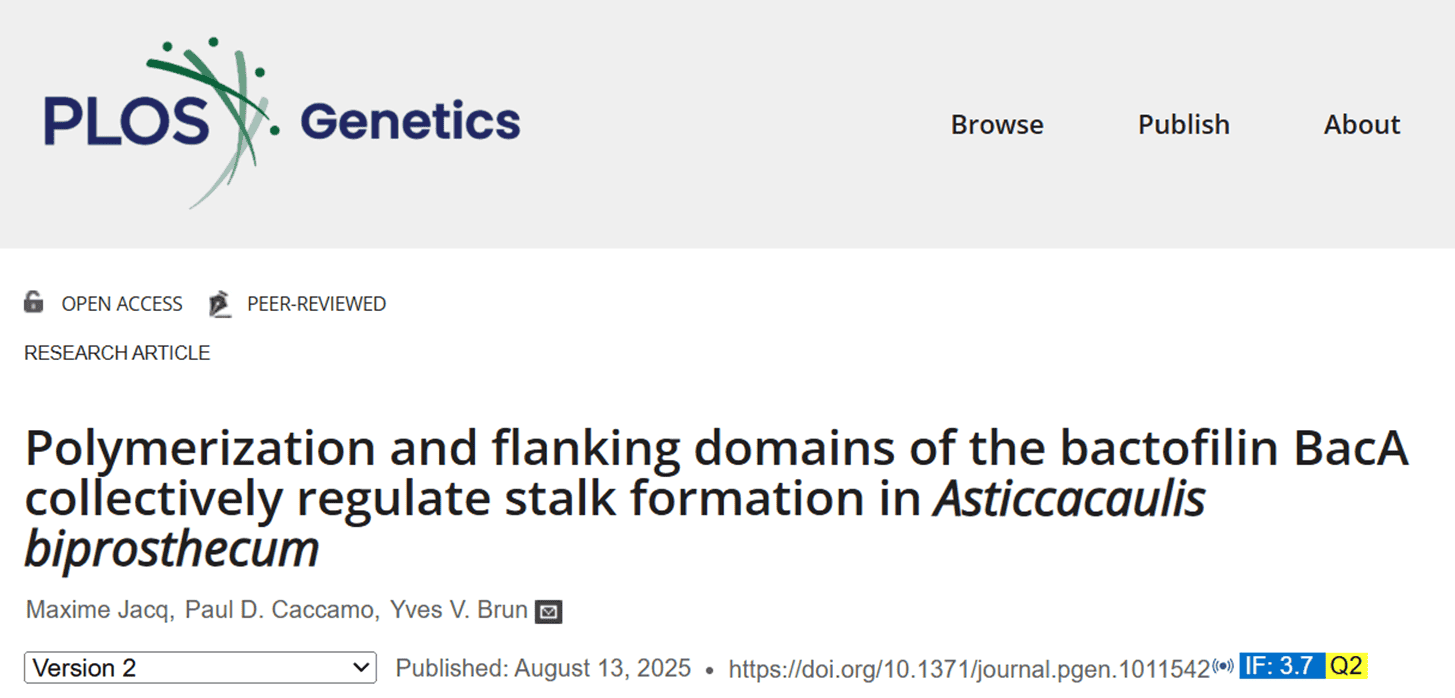In August, several groundbreaking studies supported by abinScience, focusing on antibody and protein research, were published in top-tier journals such as Angiogenesis and Redox Biology. These studies cover critical areas including kidney ischemia/reperfusion injury and skin wound healing. Some of these achievements were made possible by abinScience's high-purity recombinant proteins and antibodies, enabling scientists to achieve significant breakthroughs in disease research and target screening. In this literature review, we highlight these advancements from leading laboratories.
Title: Inhibition of eIF5A Hypusination Enhances Antioxidant Defense to Prevent Kidney Ischemia/Reperfusion Injury
Journal: Redox Biology
Impact Factor: 11.9
Author Affiliation: Université Côte d'Azur

This study focuses on kidney ischemia/reperfusion (I/R) injury, where the core mechanism involves excessive reactive oxygen species (ROS) production during reperfusion, leading to oxidative stress that impairs kidney function and promotes fibrosis. Using mouse I/R models and proximal tubule cell hypoxia/reoxygenation models, the research team demonstrated that the unique modification of eIF5A—hypusination—plays a critical role in regulating oxidative stress. The drug GC7, which inhibits eIF5A hypusination, significantly enhances antioxidant defense, particularly by increasing catalase activity to eliminate excess H₂O₂, thereby reducing acute kidney injury, improving kidney function recovery, and decreasing fibrosis. Proteomics analysis further revealed that GC7 rapidly and persistently reshapes cellular metabolism and oxidative stress-related pathways. Overall, the results suggest that targeting eIF5A hypusination is an effective anti-ischemic strategy with potential applications in kidney transplantation and marginal donor organ protection.
abinScience provided the anti-hypusine antibody (Catalog No.: YP587033), used in Western blot experiments to detect the hypusination modification levels of eIF5A protein. This validated whether GC7 successfully inhibited eIF5A hypusination and linked this molecular event to downstream antioxidant responses and kidney protection effects.
Title: Angiopoietin-2 Binds to FGFR2, Inhibits FGF-FGFR2 Signaling, and Delays Cutaneous Wound Healing by Inhibiting Wound Angiogenesis
Journal: Angiogenesis
Impact Factor: 9.2
Author Affiliation: National Institutes of Health, USA

The study investigates the mechanism of angiogenesis in skin wound healing. Researchers found that angiopoietin-2 (Ang2) not only acts as a ligand for Tie2 receptors but also directly binds to fibroblast growth factor receptor 2 (FGFR2), inhibiting the downstream FGF/FGFR2 signaling pathway. At the cellular level, Ang2 suppresses FGF-induced endothelial cell migration and proliferation. In mouse wound models, topical Ang2 significantly delayed wound healing, evidenced by reduced angiogenesis and mesenchymal cell recruitment. Conversely, using AMG386 (which blocks Ang1/Ang2 binding to Tie2) or REGN910 (which blocks Ang2 binding to Tie2) accelerated wound healing, accompanied by increased angiogenesis and inflammatory cell recruitment. In summary, Ang2, as a novel ligand for FGFR2, inhibits repair in the skin injury environment, suggesting that blocking Ang2 could be a potential therapeutic strategy to promote wound healing.
abinScience provided REGN910/Nesvacumab (Catalog No.: HT073036) for researchers. In animal experiments, subcutaneous injection of this antibody blocked Ang2 binding to Tie2, significantly accelerating wound healing in mice, with enhanced angiogenesis and increased inflammatory cell recruitment. This supports the conclusion that blocking Ang2 can reverse its inhibitory effects on repair and provides direct evidence for Ang2 as a clinical target.
Title: Polymerization and Flanking Domains of the Bactofilin BacA Collectively Regulate Stalk Formation in Asticcacaulis biprosthecum
Journal: PLOS Genetics
Impact Factor: 3.7
Author Affiliation: University of Montreal

This study focuses on the mechanism by which the bacterial cytoskeletal protein bactofilin BacA regulates stalk formation in Asticcacaulis biprosthecum. Through structural prediction, mutant construction, and microscopic imaging, researchers redefined the core polymerization domain of BacA and validated the critical roles of its N-terminal and C-terminal domains in protein localization and morphogenesis. The results showed that deletion of the N- or C-terminal domains led to the formation of deformed "pseudo-stalks" and abnormal BacA localization in cells, while point mutations affecting polymerization similarly disrupted stalk synthesis. Overall, BacA relies on both its self-polymerization properties and the localization mediated by its flanking domains to function in cellular morphogenesis. This study highlights the conserved and diverse roles of bactofilins as a regulatory platform for bacterial morphogenesis.
abinScience provided the anti-GAPDH polyclonal antibody (Catalog No.: HY030035) as a loading control for Western blot experiments, ensuring consistent protein loading across different strains or mutant samples, thereby making the detection of BacA and its mutant expression levels reliable and credible.
Literature Citation Reward Program
To express gratitude for the support and trust of researchers, abinScience is excited to launch a Literature Citation Reward Program! Whether you are a pioneer in life sciences or a scholar dedicated to laboratory exploration, you can apply for generous rewards by publishing articles in SCI journals using abinScience's full range of products!

 中文
中文 English
English





